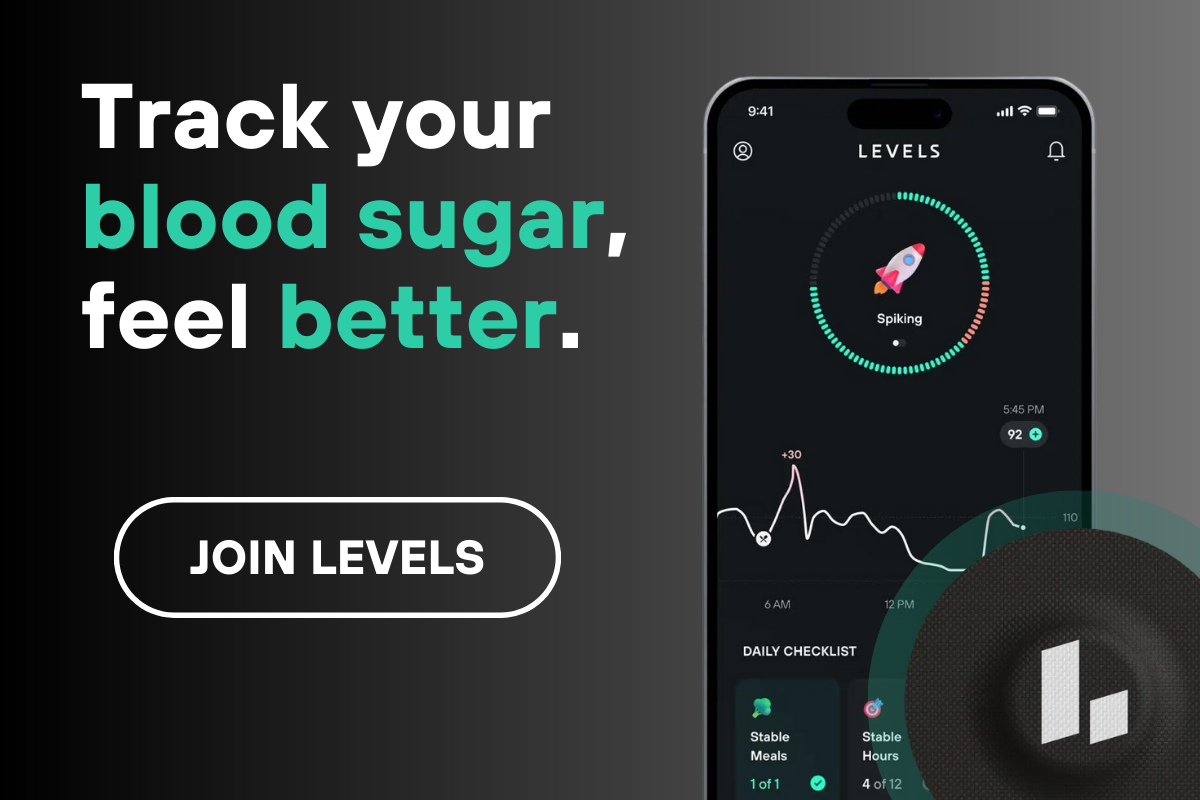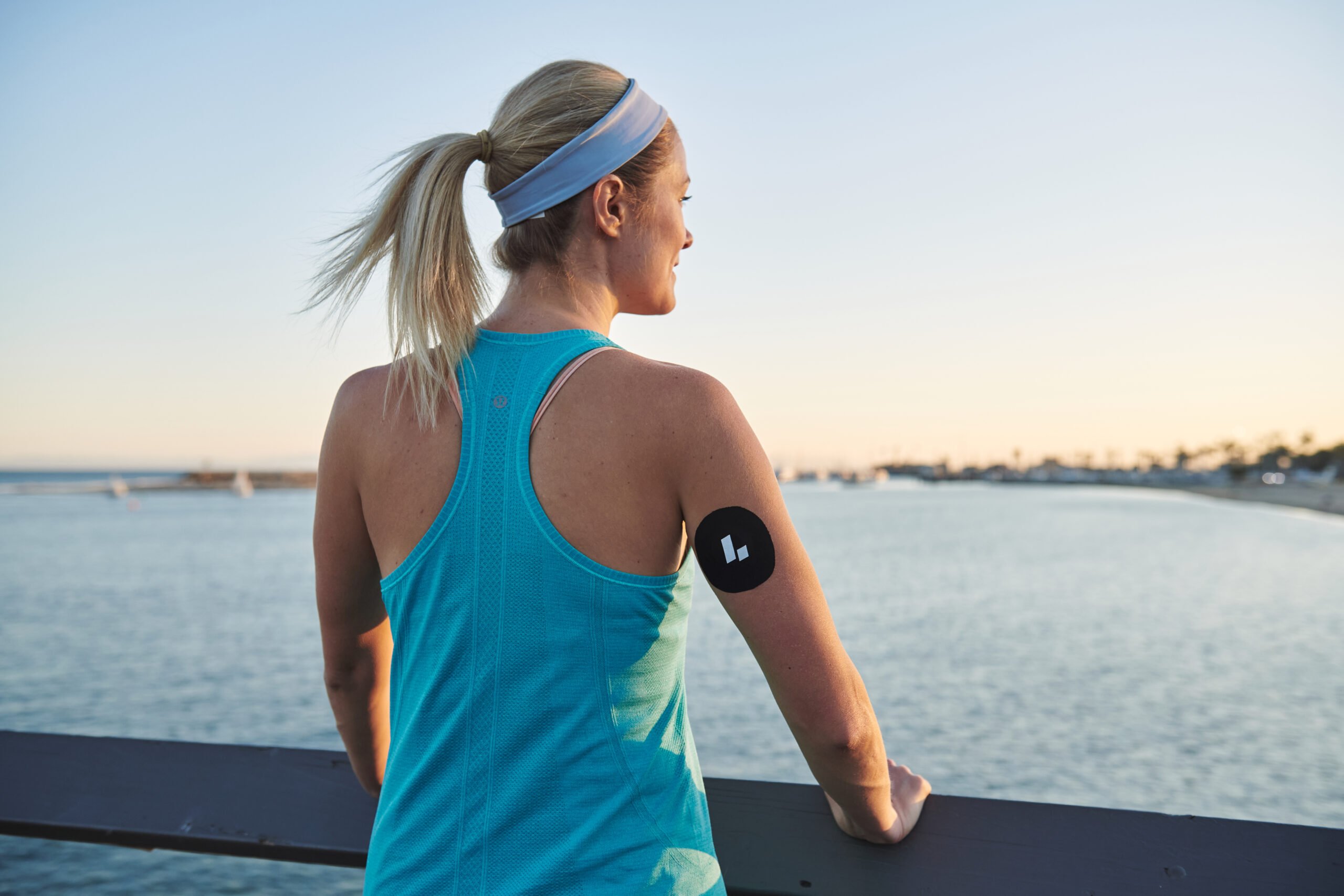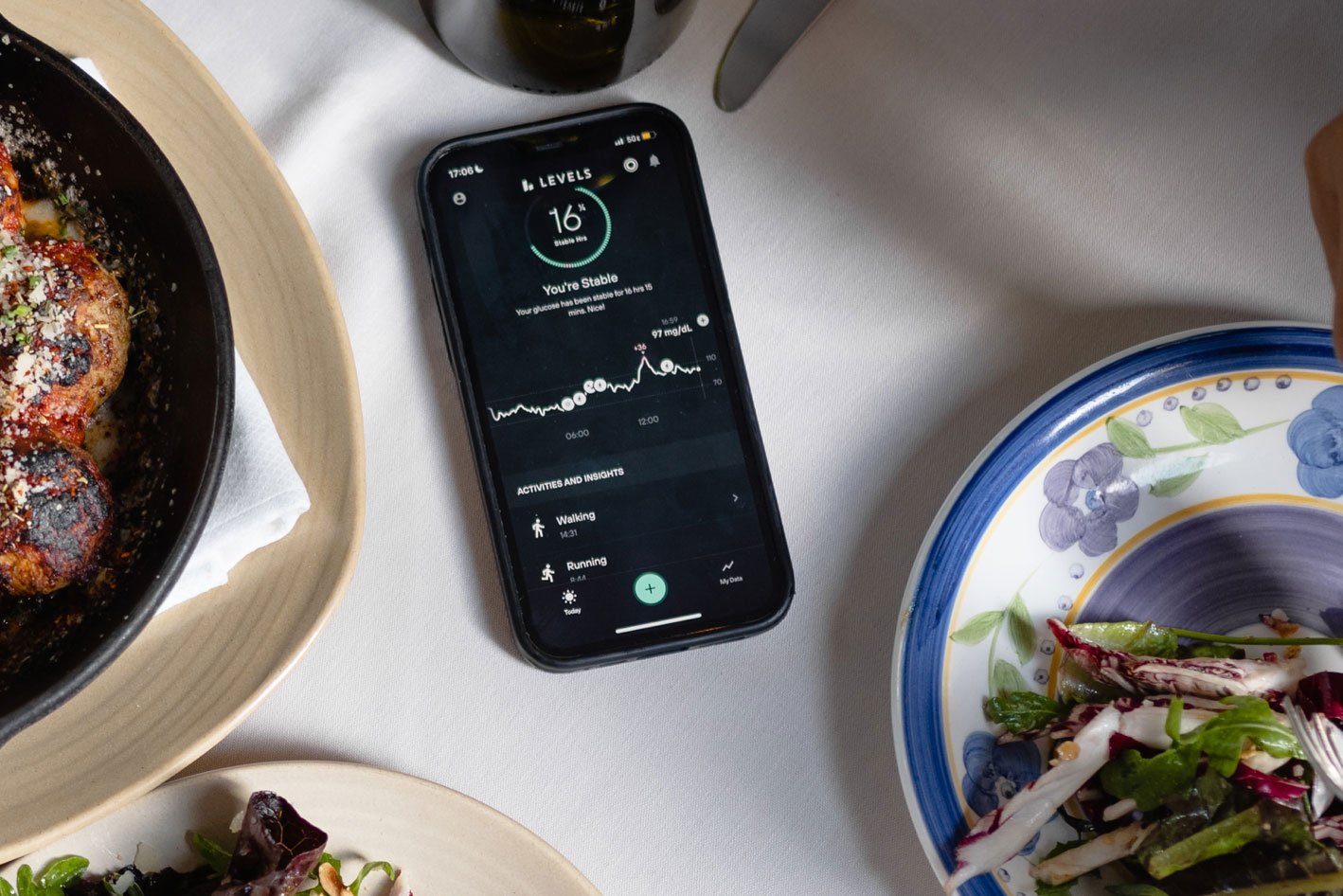Since its inception in 2019, Levels has been focused on solving the metabolic health crisis by helping all kinds of people see and manage their blood sugar. That’s why we’ve made continuous glucose monitors (CGMs) easy to access and are running the most extensive study of glucose dynamics ever.
But just as optimal metabolic health is about more than blood sugar, Levels is more than just a glucose chart. Watching your glucose rise in real time after you eat is incredible when you first start using a CGM. But to make any behavior change from that data, you need insight, actions, and accountability. Those are the pillars the Levels app delivers on top of the raw glucose data.
For example, our simple meal logging lets you tie a glucose response to a meal (and any exercise around it), so you can build a library of meals that work for you (and don’t). But it also helps you see the context for that reaction by suggesting the particular ingredients that triggered the rise, offering healthy swap ideas for that food, and giving you delicious, simple, metabolically healthy recipes you can try next time.
Here are five more things you can learn using the Levels app.
1. Surprising foods that spike you—and don’t
Blood sugar response is highly individualized. We have members that can eat a bowl of white rice and see barely a rise, while others pair just a little brown rice with protein and fat and still see a sharp spike. That’s why simply going by carb count or generic diet advice rarely works and may even cause you to cut out otherwise healthy food.
The magic moment for nearly all our members comes the first time they eat a food they’ve long thought was a healthy staple—oatmeal, smoothie, acai bowl—and watch their blood sugar soar. Likewise, it’s a thrill when they find some decadent treat—like chocolate brownies—and see their glucose curve barely register.
👉 “I found that a morning bowl of oatmeal spiked me to 150 mg/dL. That shocked me. Oatmeal has a reputation in the medical community for being so healthy because of its beta-glucan fiber. Even steel-cut oats gave me the same response.”—Dr. Kayt Havens
Experimenting with your usual diet and trying new foods while using Levels food logs and meal comparison (where you can see your response to two meals head to head) helps you dial in a diet not only leads to stable glucose but is one you can stick to because it’s full of things you genuinely enjoy eating.
👉 “The other day, I ate two tablespoons of Nutella, and my glucose didn’t go over 100 mg/dL, and it came back down in an hour, which is pretty great.”—Chris Wise
And that stable glucose is vital to so many aspects of optimal health, from avoiding brain fog to managing weight to staving off cellular damage that leads to chronic disease.
2. How stress and sleep impact your body
Another consistent revelation for our members is how much non-food factors can impact their blood sugar response. The effect of poor sleep, in particular, can be eye-opening. We all know we should sleep more, but seeing your glucose spike to a breakfast that’s usually stable just because you only got five hours last night brings home how much sleep impacts our body’s energy systems.
👉 “When I’m sleep-deprived, I’ll spike a lot harder, stay elevated for a lot longer, and see increased variability even at baseline without food.”—Dr. Kevin Jubbal
Research backs it up: Studies consistently show that getting short, poor quality, or irregular sleep impairs blood sugar regulation the following day.
Stress, too, can produce hormonal reactions that interfere with your usual glucose processing. It’s not unusual for members to see spikes that look like they just ate a cupcake but were driven by giving a presentation or having an argument at home.
Just as with food, putting actual, physiological data to these experiences in the Levels app can make it easier to finally implement new behaviors: you know if you stay up for one more episode, it’ll show on your app tomorrow. And when someone cuts you off in traffic, you can see the benefit of breathing through the anger rather than boiling in it.
3. How exercise affects your blood sugar
Moving every day is vital to metabolic health and to a long life. It’s why longevity obsessive Dr. Peter Attia now cites exercise as the most important lever you have for staying healthy into old age.
By importing workout data from Apple Health or Google Healthkit, the Levels app helps you see the immediate impact of exercise on your glucose curve, even factoring it the Zone Score for a given meal. For example, walking for 30 minutes after a meal is one of the most effective ways to blunt a post-eating glucose rise. You’ll also see how doing intense exercise like HIIT can produce a glucose spike as your body circulates more glucose to fuel your work, but also how consistently doing HIIT can improve your body’s ability to process glucose over time.
And for endurance athletes, watching your glucose curve in real-time can help inform your fueling strategy, ensuring you are giving your body just enough carbs to avoid the bonk.
👉 “This experiment has given me the confidence to fuel by feel. I no longer have to stick to a regimen of a certain number of calories per hour. If I feel an energy dip, then I will eat—my body is efficient at burning what I eat.”—Mike McKnight
4. Your natural daily glucose cycles
Your body’s circadian rhythms affect nearly all your hormonal processes and glucose dynamics are no exception. Studies show that people tend to be more insulin sensitive (meaning their body can better process glucose) in the morning than evening. Many people also see their blood sugar naturally rise every morning—an phenomenon known as the dawn effect. But like food, these temporal fluctuations can vary among people—some find they can eat later in the evening without much response, while for others, a handful of popcorn will drive erratic blood sugar all night.
By observing your daily glucose patterns over time as you go through your everyday routines, you’ll recognize how your body’s metabolic system behaves differently throughout the day. This insight can help you hone your strategies for maintaining stable blood sugar without being overly restrictive.
👉 “I’m going through menopause and having night sweats. I realized that my blood sugar was lower if I drank alcohol a little too late, and I had more hot flashes. Now, I’ve tweaked my habits so that I cut off alcohol by 7 p.m.—Julie Cottrell
5. How your new habits are making you healthier over time
Using data and insights to build all these healthy habits has an immediate payoff: you will feel better day to day. Avoiding the spike and crash cycle that leads to that mid-morning slump, improving your sleep consistency, and ensuring you get in that post-meal walk—you’ll be amazed at how good stable blood sugar can feel.
But we’re also working toward long-term health. We want to stave off conditions like Alzheimer’s or heart disease as long as possible, manage the menopausal transition with minimal side effects, and keep our energy high as we age. These, too, are the effects of maintaining optimal metabolic health markers over time—the result of those day-to-day changes.
That’s why Levels shows long-term trends like average glucose so you can see the physical impact of your lifestyle changes over many months. It’s also why we’re rolling out Levels Labs, on-demand blood testing of other key markers like insulin, uric acid, and triglycerides, so you can see your progress as often as you like.
👉 “I received a text from my internist who just said, “Holy shit, I’ve never seen anything like this.” My A1C went from 6.1 to 5.2, my glucose went from 117 to 84. My insulin went from 30 to 5. It was nuts.”—Betsy McLaughlin
Conclusion
Using Levels is about more than just seeing blood sugar spikes and cutting out carbs. By adding daily guidance, contextual insights, and long-term trends to your data, you can make fundamental, lasting changes. Click here to learn more about Levels and join today.










